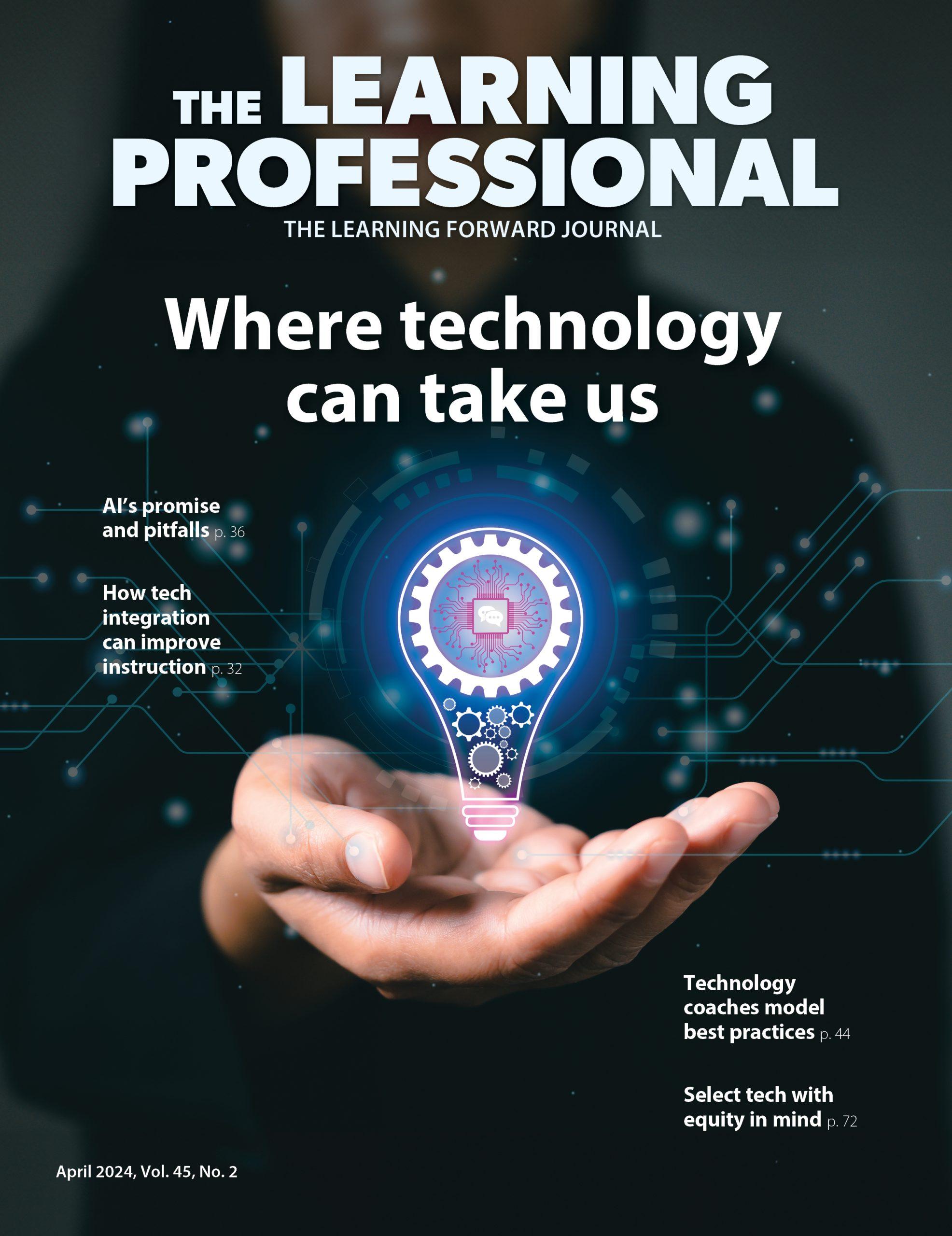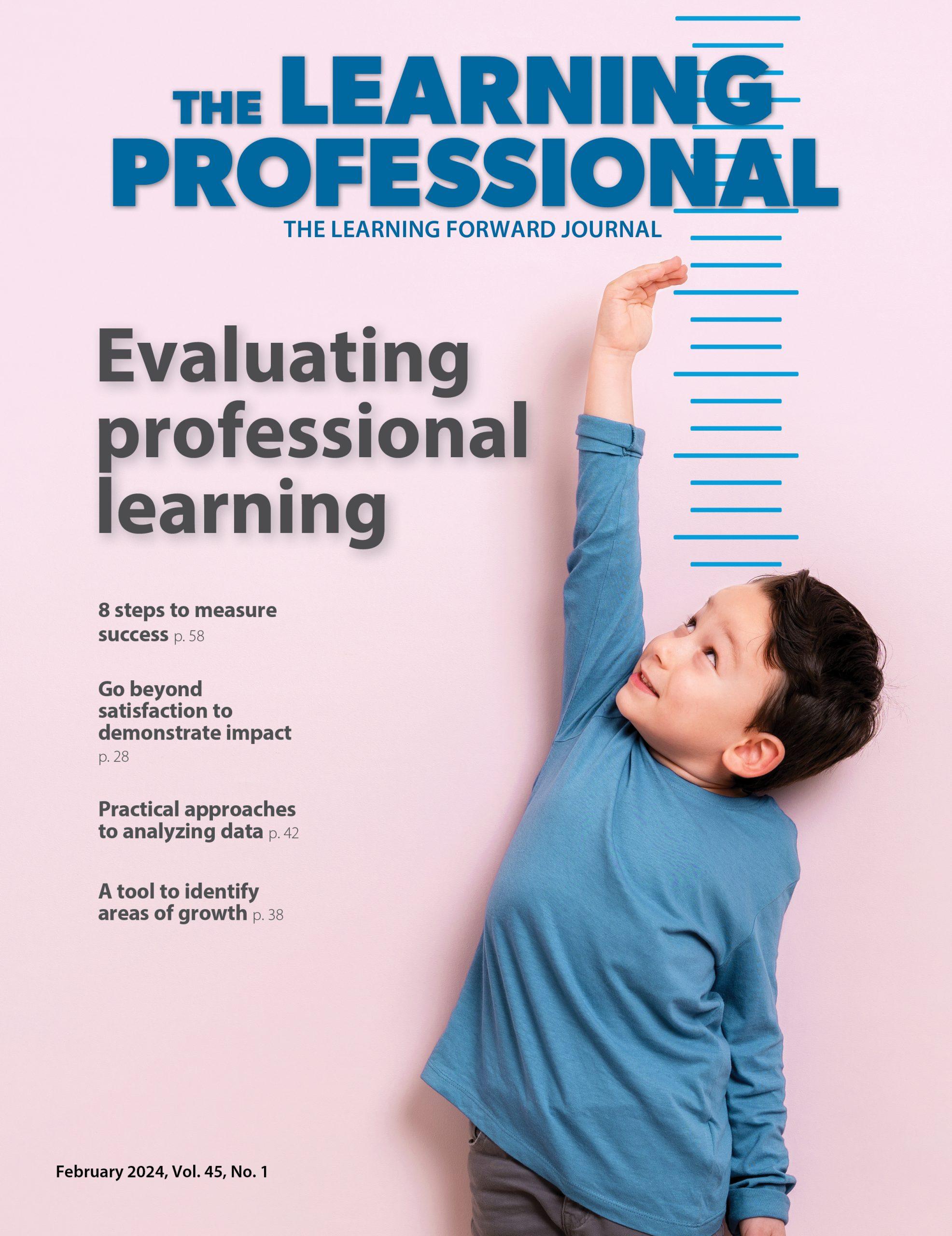Collaborative culture
A collaborative, high-performing partnership is possible — some assembly required
By Learning Forward
October 2011
Vol. 32 No. 5
This is my first full year as principal. I had worked in our central office in human resources until I decided it was time to come back into the schools. I missed the collaboration among staff, I missed working with a large team, and mostly I missed the students. Midyear, there was an opportunity to fill the principal role at our flagship campus. I transitioned into the role in April 2010, which is a challenging time of year in a 6th- to 12th-grade building.
Graduations for 8th-grade and 12th-grade students, end-of-year activities, and general dissatisfaction together created tension among all stakeholders. During my first month, I listened. I listened to teachers in one-on-one meetings and whole-group meetings, I listened to parents, students, and nonteaching staff. I began making small changes to get the best results possible for that school year, balanced with planning how we would move forward as a school community for the following school year.
I had been to several leadership development conferences and trainings, and through my doctorate in educational leadership, I was exposed to many ideas about leadership that were beginning to transfer to schools and classrooms across the world. I even went to visit some of the renowned schools to learn what they were doing to be deemed successful. It was the ideas in Fierce Conversations that gave me the language and action steps to practice what I believe are the keys to success in schools and classrooms.
I have always felt strongly about the social and emotional development of students. We have an obligation to teach them about being smart plus having heart. As I transitioned into planning mode, something inside me told me to not let that belief go. I told myself, “This is what you believe in your heart, and what we as adults have to model for our students and families.” I learned from my time listening to staff that they did not feel heard. As a whole, we were not communicating effectively with our stakeholders, including our families and students. I decided each staff member would read Fierce Conversations for summer reading to prepare us for the next school year. By the end of the summer, I realized that the tools in the book supported all of us in our transition, regardless of our role or level of experience.
JULIE WILBUR
One of the instructional leaders on my team has been working in education for 43 years. Julie Wilbur is completely committed to coaching and building the capacity of teachers after her work as a classroom teacher for more than 35 years. I wondered how I, with fewer years of experience in the field of education, would continue to encourage her to grow professionally and personally.
After she read Fierce Conversations, Wilbur’s ideas about leadership changed as well. She said, “This is what I feel I already believe in, and now it gives me the tools I need to put it into practice.” Wilbur has embraced the mineral rights model by digging deeper in her coaching sessions and is working to deepen her relationships. The concepts of Fierce Conversations have allowed her to build trust among a staff that is hesitant to trust one another.
This connection also deepened our relationship. Wilbur knows that I value her as a lifelong learner, and we continue to have conversations about her coaching style and facilitating conversations. Together, we practice the tough conversations that need to happen. She made a list of all of the conversations she needs to have as we kick off a new school year and start with a clean slate. The implications of this deep investment in changing our staff culture are immense. As a leader, I know I have a more engaged staff member who trusts me and is willing to take risks on conversations to ultimately deepen relationships. This is miles from where we ended the school year just months ago.
ANDREA HERNANDEZ
Ideas in Fierce Conversations also impacted a new team member to our school community. Andrea Hernandez was hired to lead all after-school programs and bring in opportunities to our students that build on the academic opportunities we offer at school. Hernandez has a strong desire to develop students through her nontraditional teaching role. She has a passion for communication and change in an organization. At a time when our school is going through a transition period, she has the skills to bring critical context to our conversations to shape a transition plan for the betterment of our students’ experiences.
Hernandez went on a path of professional self-discovery and realized that she had to come out from behind herself and make her conversations real to accomplish her goals. She said that as she joined our team, “not once in the past five weeks have I felt even an inkling of having to ‘fake it.’ I am very comfortable and confident in the conversations that I’m having with people I encounter, both within my organization and outside. When conversing with people for the first time, I experience no anxiety or concern about how they might perceive my lack of knowledge because I honestly believe that I have no lack of knowledge, only a different set of it.”
CHANGING A CULTURE
We are framing our school meetings using the beach ball model. We believe as a team that we each bring specific context to the conversation that is extremely important when making a decision for our school and that we all need to be heard. As a leader, I know how important it is that all people be heard before I make a final decision. We continue to develop our belief that each person’s stripe on the beach ball impacts the end result.
Our teachers have shared feedback about our changing culture of collaboration as they prepare for students’ arrival at the start of the new school year. In coaching sessions, they have said, “We just feel like there is so much trust in our abilities this year, and that is really motivating to us,” “It seems like there is a real effort to focus on building real relationships in the school,” and “We really appreciate that the leadership team values our opinion, and we already feel like we’re being heard.” I look forward to continuing to tackle our toughest challenges and leaving a positive emotional wake for our staff through conversations.
Hernandez’s and the teachers’ experiences are just as important as Wilbur’s experience, yet they all came to the team with such different skills, context, beliefs, and knowledge. We have only begun to build our capacity, and we have a strong foundation to build upon.
The principles of Fierce Conversations allow me as a leader to bridge all of these differences to align to one common goal — high student engagement. We strive to be a school where students want to attend, participate, and take ownership of their educational experiences. The end results are highly caring and ethical people who will be college-bound and able to succeed in an ever-changing world. Our work in building our team’s capacity has also created an engaged staff committed to changing students’ futures.
There’s a story I like about an ad in a magazine. I don’t know if it’s true. The ad said, “How to write a novel. Simple, easy-to-follow directions. $20.” When people sent in their 20 bucks, they received a dictionary, with the instructions, “Some assembly required.” Isn’t that the truth! And we know the same could be said for relationships. Perhaps I’ve just been asked to work with you and our shared goal is a collaborative, high-performance partnership — some assembly required. Or I’ve come into a new school, classroom, or group of students and their parents, and I want to partner with those folks so that we can do amazing things together and enjoy the process — some assembly required. That assembly occurs one conversation at a time, as Angela Brooks-Rallins explains.
— Susan Scott
Susan Scott
In each issue of JSD, Susan Scott (susan@fierceinc.com) explores aspects of communication that encourage meaningful collaboration. Scott, author of Fierce Conversations: Achieving Success At Work & In Life, One Conversation at a Time (Penguin, 2002) and Fierce Leadership: A Bold Alternative to the Worst “Best” Practices of Business Today (Broadway Business, 2009), leads Fierce Inc. (www.fierceinc.com), which helps companies around the world transform the conversations that are central to their success. Fierce in the Schools carries this work into schools and higher education.
Columns are available at www.lfstage.xyz. © Copyright, Fierce Inc., 2011.
Learning Forward is the only professional association devoted exclusively to those who work in educator professional development. We help our members plan, implement, and measure high-quality professional learning so they can achieve success with their systems, schools, and students.
Recent Issues
LEARNING TO PIVOT
August 2024
Sometimes new information and situations call for major change. This issue...
GLOBAL PERSPECTIVES
June 2024
What does professional learning look like around the world? This issue...
WHERE TECHNOLOGY CAN TAKE US
April 2024
Technology is both a topic and a tool for professional learning. This...
EVALUATING PROFESSIONAL LEARNING
February 2024
How do you know your professional learning is working? This issue digs...








